Ch.11 - Muscles
1/34
Earn XP
Description and Tags
95 to remember! Assume Agonist if not stated otherwise. L = Location, A= Action, O = origin, I = Insertion, PM = Prime Mover (more specific than agonist)
Name | Mastery | Learn | Test | Matching | Spaced |
|---|
No study sessions yet.
35 Terms
How does reversing muscle action work?
Muscles can’t undo their own actions, only other muscles can. Muscles on opposite sides will oft have opposite functions. Likewise, if muscles are in different compartments, they’ll usually have different functions.
Ex: Pectoral Major Dorsi will flex, Latissimus Dorsi will extend
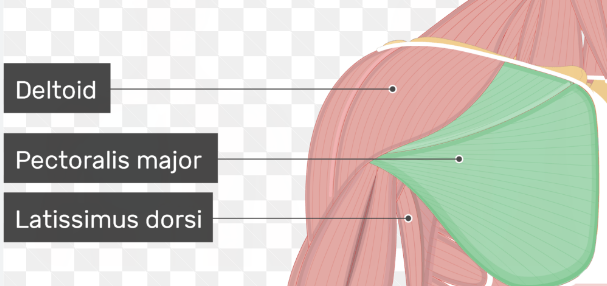
Difference between prime mover and agonist
All prime movers are agonists, but not all agonists are prime movers. Prime movers will be the main muscle and there’s usually only ONE dominant muscle. There can be multiple agonists for a single movement.
Ex: Agonists ~ Biceps Brachii, Brachialis, brachioradialis VS PM ~ Biceps Brachii
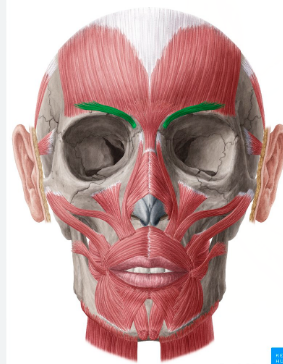
Corrugator Supercilii
L = Above eyebrows, deep to orbicularis oculi
A = draws eyebrows in, frowning
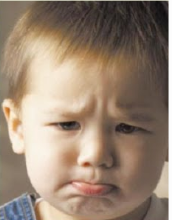
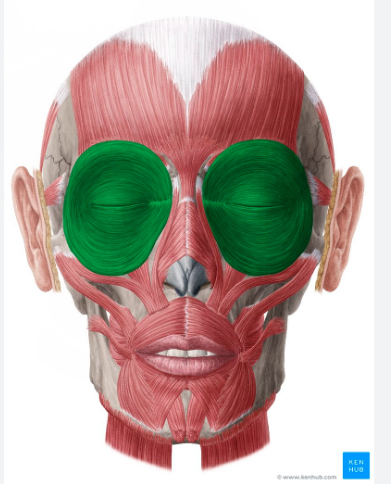
Orbicularis Oculi
L = full circle in orbital region
A = closes eyes
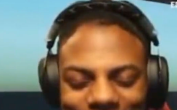
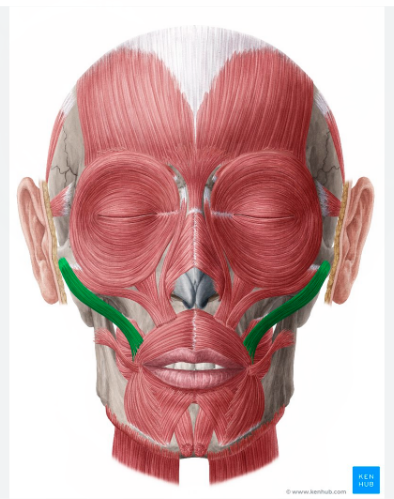
Zygomaticus (major + minor)
L = from zygomatic bone to mouth
A= corners of lips UP and LATERAL, :)
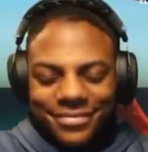
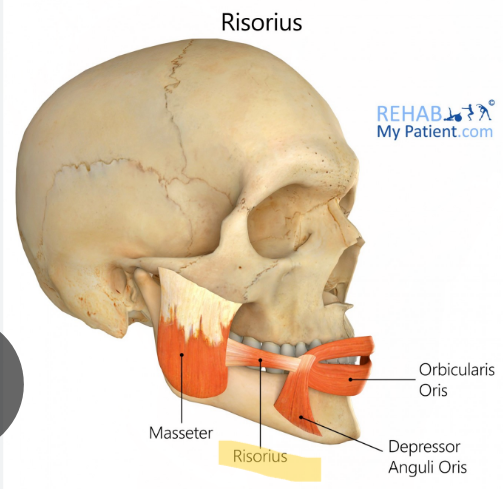
Risorius
L = looks like small muscle going from masseter → oris
A = synergist to zygomaticus :)
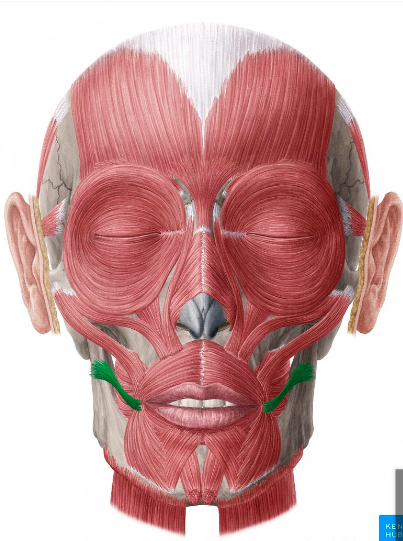
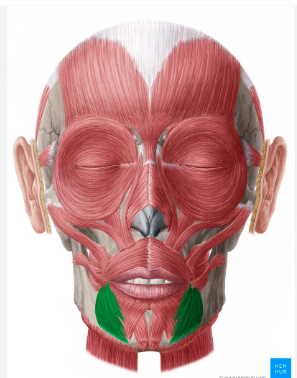
Depressor Anguli Oris
L = below mouth, on the sides of chin
A = antagonist to zygomaticus, draws lips laterally, :(

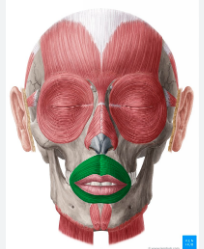
Orbicular Oris
L =surrounds oral cavity
A = closes mouth

Orbicularis
full circle
Oris
relating to the mouth
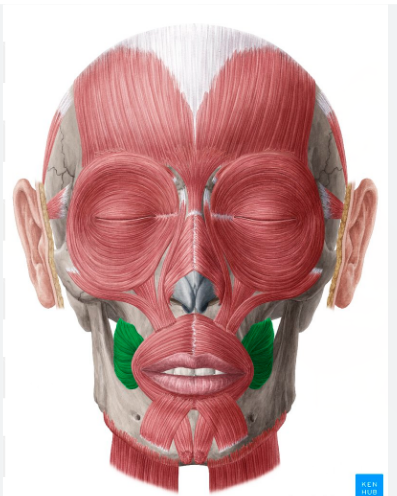
Buccinator
L = wall of the cheek
A= compresses cheeks, to whistle or suckle
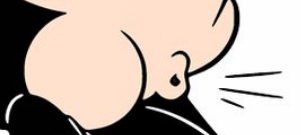
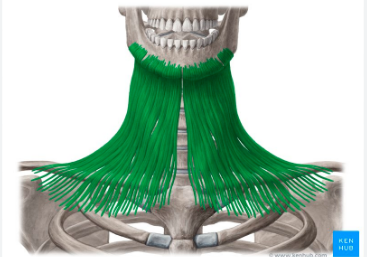
Platysma
L = spans from mandible to clavicle
A = tenses neck muscles
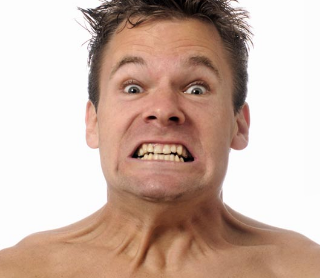
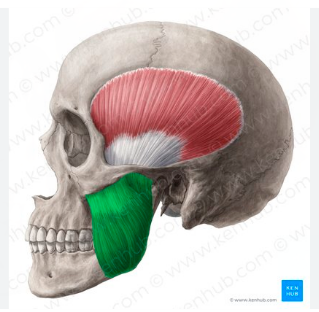
Masseter
O = Zygomatic Bone + Arch
I = Mandible
A = PM ; Jaw closure, mastication
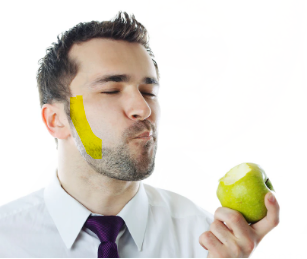
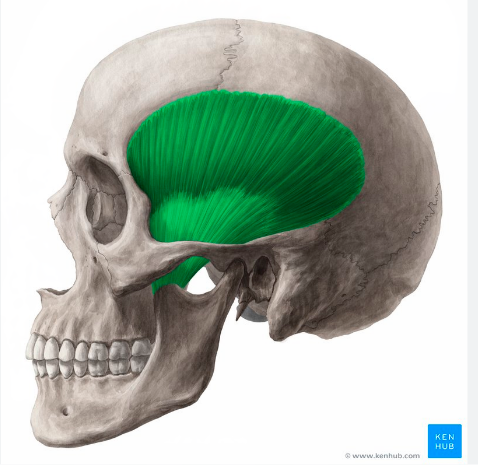
Temporalis
O = = temporal fossa
I = Mandible
A = jaw closure, mastication
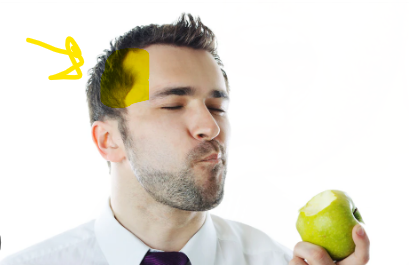
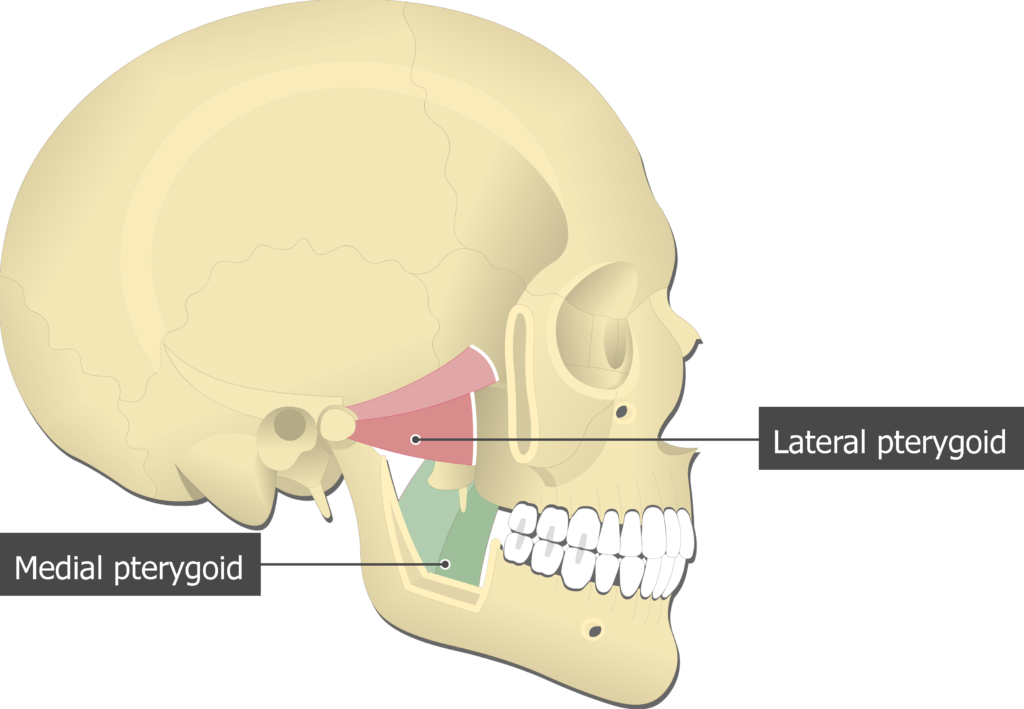
Medial/Lateral Pterygoid:
L = deep, can’t be seen on model
A = grinding food, side-to-side chewing
Brevis
short
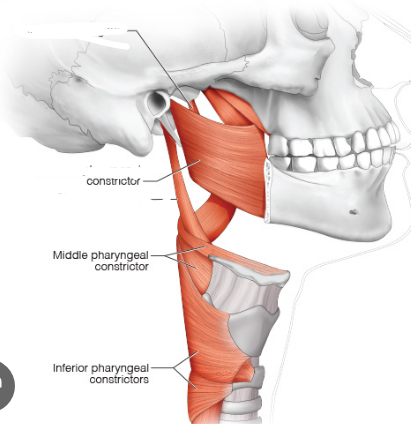
Pharyngeal* constrictor muscles
*Pharynx = throat
A = contract sequentially downward to swallow
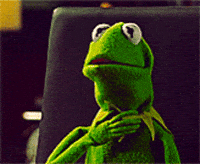
Muscles of Mastication (ID 5):
Masseter, Temporalis, Medial Pterygoid, Lateral Pterygoid, Pharyngeal Constrictor
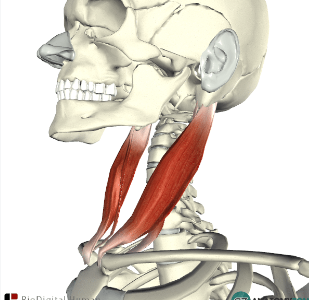
Sternocleidomastoid
*Sternum, Clavicle, Mastoid (zygomatic bone)
O = manubrium + clavicle
I = mastoid process + occipital bone
A = flexes laterally, PM: head flexion
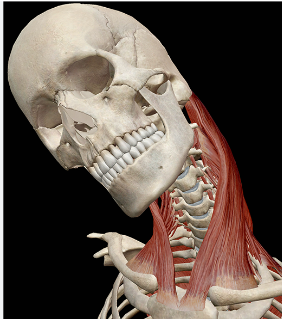
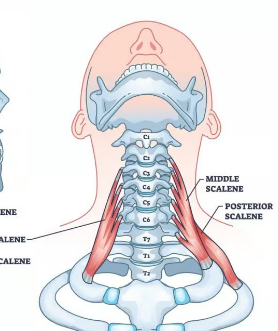
Scalenes
O = vertebrae
I = ribs 1+2
A = Synergist for inhalation/inspiration, helps w breathing
Intrinsic Muscles of the back [ID 5]:
L = deep in back
A = extend trunk, vertebrae/spine
Includes: [Iliocostalis, Longissimus, Spinalis], Splenius, Semispinalis (deep)
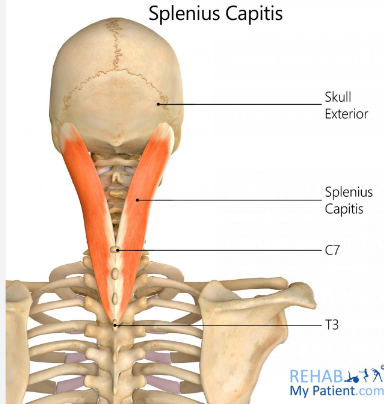
Splenius
L = deeper than the trapezius
A = antagonist to sternocleidomastoid, extends head
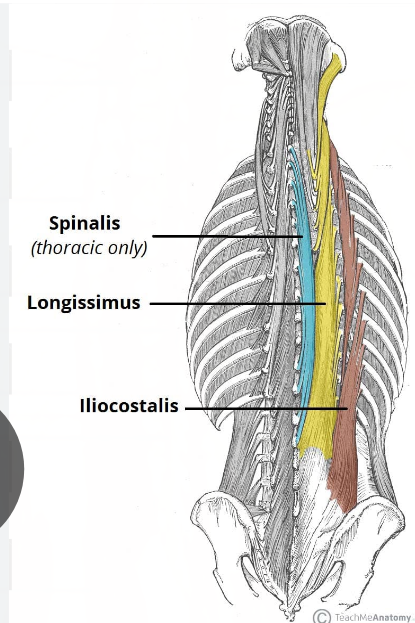
Erector Spinae:
L = L → M, Iliocostalis, Longissimus, Spinalis
A = same as intrinsic muscles of the back
I love spaghetti!
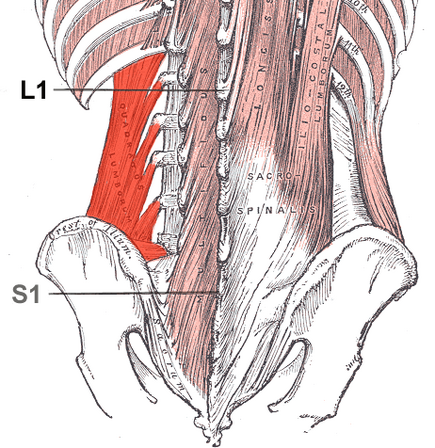
Quadratus Lumborum
L = deep in posterior wall
A= flex vertebral column
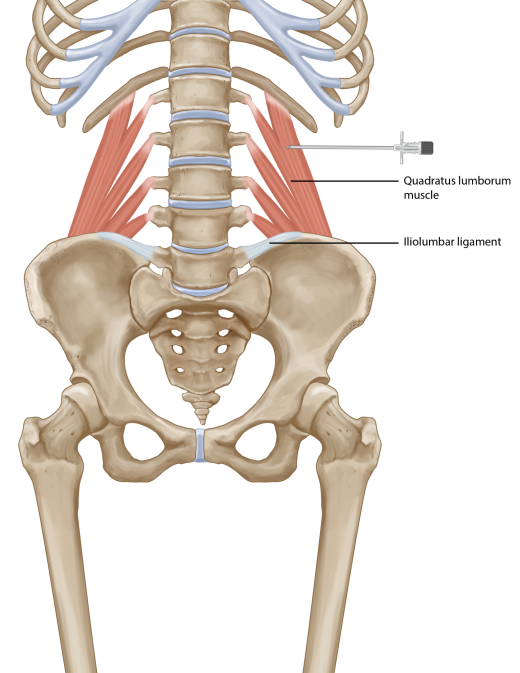
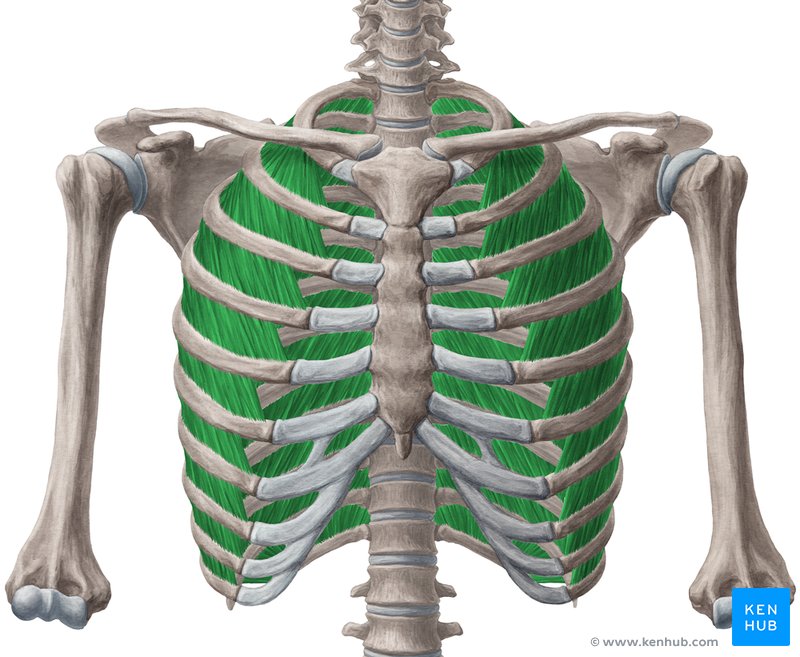
External Intercostals:
L: w/in rib cage and most superficial; going diff. direction than other intercostals
A = synergist to diaphragm; lifts ribcage for inhalation
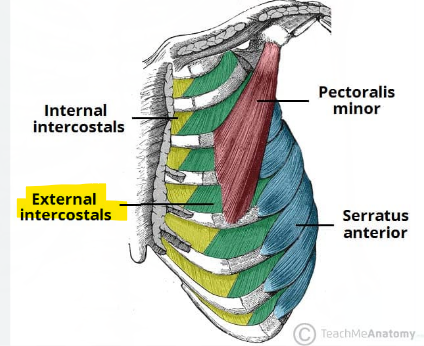
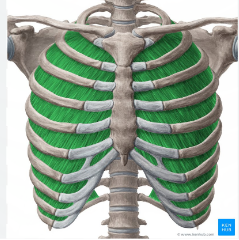
Internal Intercostals
L = w/in rib cage and deeper; going diff. direction than other intercostals
A = synergist to inner intercostals, aids expiration
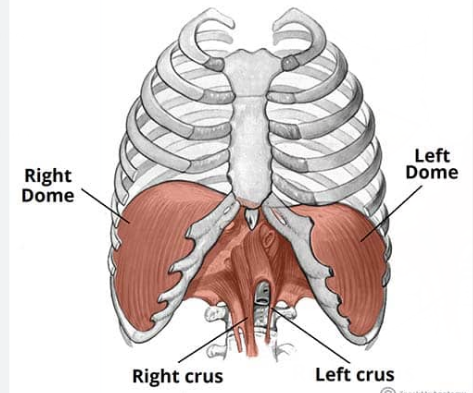
Diaphragm
L = between thoracic vertebrae and top of lumbar vertebrae
A = PM for inspiration
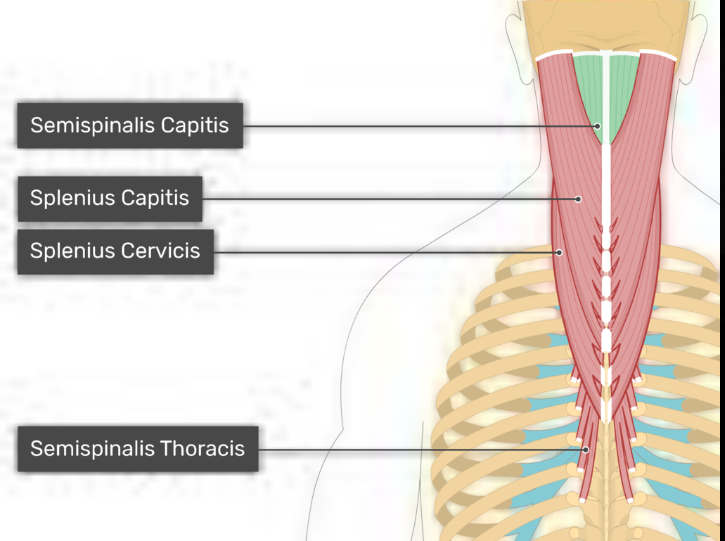
Semispinalis
L = NOT part of the Erector Spinae, deep neck muscle
A = extends trunk, vertebrae/spine
Deep muscles of the thorax (ID 3):
External Intercostals, Internal Intercostals, Diaphragm
Muscles of the Abdominal Wall (4):
External Oblique, Internal Oblique, Transversus abdominis, Rectus Abdominis
*No bony attachment
Muscles of the face (ID 8):
Corrugator Supercilii, Orbicularis Oculi, Zygomaticus, Risorius, Depressor Anguli Oris, Orbicularis Oris, Buccinator, Platysma
Anterolateral Neck Muscles (ID 2):
Sternocleidomastoid and Scalenes
Rotator Cuff:
teres minor
supraspinatus
infraspinatus
subscapularis
(!) NOT THE TERES MAJOR, EVEN IF TERES MINOR HAS SOME O AND I
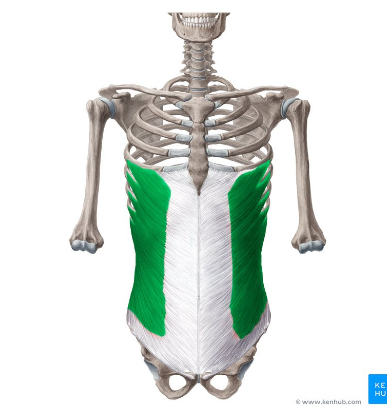
External Oblique:
L = found infroolaterally and supromedially
A = antagonist to vertebral spine; flex vertebral column + compress wall
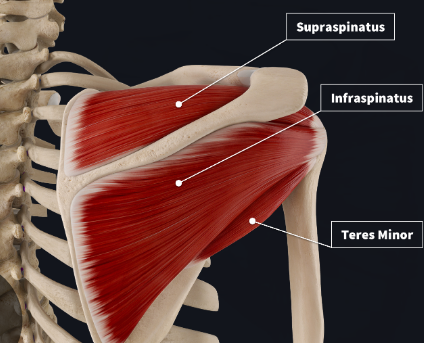
Posterior View of RC:
Infraspinatus:
O - infraspinous fossa
I = greater tubercle
Supraspinatus:
O - supraspinous fossa
I = lesser tubercle
Teres Minor
O - pectoral girdle
I = humerus
(!) All subscapularis shares I w/ supraspinatus